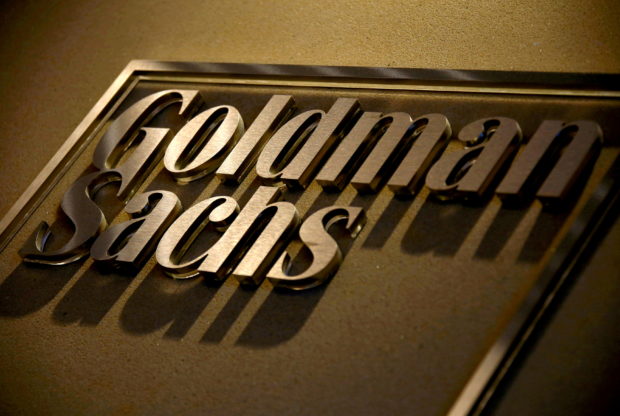
FILE PHOTO: A sign is displayed in the reception of Goldman Sachs in Sydney, Australia, May 18, 2016. REUTERS/David Gray
Investment banking giant Goldman Sachs has slashed its 2022 growth forecast for the Philippines to 6.9 percent from 7.9 previously, as global price shocks wrought by Russia’s invasion of Ukraine would hurt the import-reliant economy.
In a March 10 report, Goldman Sachs Economics Research said that the Philippines, India, Singapore and Thailand were among “the most sensitive economies” to commodity price surges seen impacting on trade, current accounts, as well as economic growth in Asia.
The Philippines suffered the second-biggest cut of 1 percentage point (ppt) in 2022 gross domestic product (GDP) growth projection among the 14 Asia-Pacific economies covered by the report—Singapore’s 1.1-ppt reduction to 4 percent was the largest.
Goldman Sachs’ updated growth forecast for the Philippines remained third-fastest in the region after Vietnam’s 8.9 percent and India’s 8.3 percent, but now below the government’s 7 to 9 percent target range.
For 2023, Goldman Sachs was also slightly less optimistic with a new GDP growth forecast for the Philippines of 6.3 percent from 6.4 percent previously.
Goldman Sachs’ tempered optimism mostly came on the back of above-target inflation expectations. It estimates the Philippines’ headline inflation to breach the 2 to 4 percent target band of manageable price hikes and average 4.6 percent this year, higher than the previous 4-percent forecast. Next year, inflation was expected to return to the Bangko Sentral ng Pilipinas’ (BSP) target range and average 3.9 percent. Goldman Sachs’ inflation forecast for the Philippines was among the highest in Asia-Pacific following India’s 6.6 percent, New Zealand’s 5.3 percent, and Australia’s 4.8 percent.
Goldman Sachs data showed that the Philippines was a net commodity importer, at about 4 percent of GDP in 2019, of which valued at almost 3 percent of GDP were oil imports. It did help that the Philippines’ energy efficiency or tons of oil equivalent as a share to GDP was among the least efficient in the region, Goldman Sachs data showed.
Across most of Asia-Pacific, Goldman Sachs said that the Russian invasion of Ukraine and the elevated prices it caused will have “negative” effects “given the region is a large net importer of commodities.”
“For most economies, including the largest ones, higher prices are therefore negative for external/fiscal balances and for growth … Overall, we expect the biggest effects of the commodity price surge to be in lower-income economies and/or highly open economies that are net commodity importers (India and a few Asean economies in particular),” Goldman Sachs said. —Ben O. de Vera